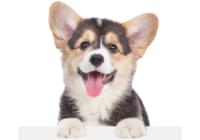Hairballs in Cats
New Diet Helps Control Hairballs in Cats
Michael W. Stephan, D.V.M.
Juno Beach Animal Hospital
Because they groom so efficiently, cats seldom suffer from many of the skin problems so common in dogs. Unfortunately, even this routine grooming can result in a significant ingestion of hair. In short haired cats, most of this hair passes easily through the digestive system and is passed out with the stool. In medium and long haired cats, even routine grooming can result in a significant amount of hair accumulating in the stomach resulting in a hairball.
Vomiting is usually the first sign of a hairball. Your cats appetite will remain good, but within fifteen or twenty minutes of eating, he or she will vomit up a long tube of undigested food. This will normally go on for two or three days until the hairball itself is either vomited or passes into the intestine. Things will then return to normal until the next accumulation of hair blocks the outflow from the stomach and the cycle starts over again. It is important to note that cats who are vomiting because of a hairball are otherwise normal and healthy. There are other conditions which may cause vomiting, some of which can be serious or even life threatening if not treated early. If your cat appears depressed or ill, loses his appetite, or if the vomiting continues beyond two or three days, you should have them checked by your veterinarian.
In the past, treatment and prevention of hairballs consisted of administering a petroleum jelly based medication which would lubricate the hairball and make it easier for your cat to either vomit it or allow it to pass into the intestine. It is necessary to add flavoring to these medications because straight petroleum jelly, without some type of flavoring to stimulate swallowing, can be easily inhaled into the lungs where it may cause a fatal pneumonia. Because of the finicky nature of cats, the addition of flavoring did not always ensure that they would eat the medication willingly.
Hills, the makers of Science Diet and Prescription Diets for dogs and cats, has recently introduce their new Hairball Control Formula with Natural Vegetable Fiber. This fiber moves hair safely and naturally through your cats digestive system to help prevent the formation of hairballs. Its triangular shape and flavor make it readily accepted by most cats, and it has been formulated to be low in magnesium and have the proper protein, vitamin, and mineral levels to promote a healthy skin and coat; bright, clear eyes; strong muscles, bones and teeth; and health and vitality. To maximize its effectiveness in controlling hairballs it should be fed as the only food. As with any dietary change, you should mix increasing amount of the new food with your cats old diet over a five to ten day period to help avoid digestive problems that result from abruptly changing foods.
Although there is only one formulation of Hairball Control Formula available right now, Hills is working on the development of Senior, Maintenance, and Light formulas so that more cats may benefit from this new breakthrough in dietary hairball control. For more information on this and other Hills diets, you can visit them on the web at www.hillspet.com or see your veterinarian.





